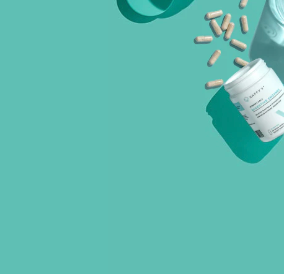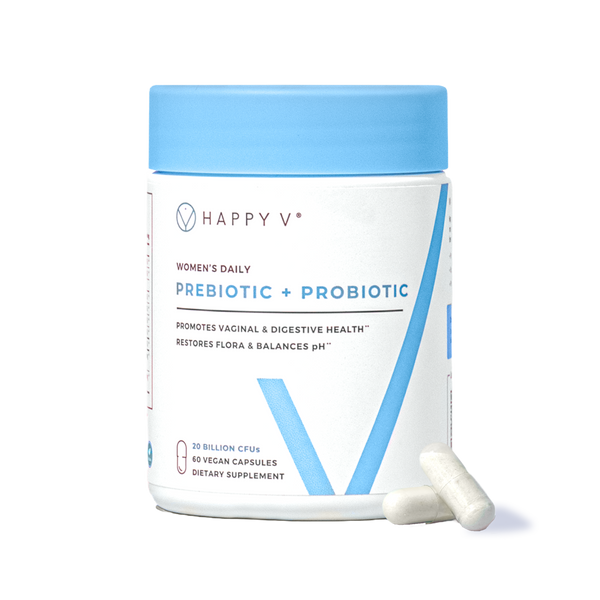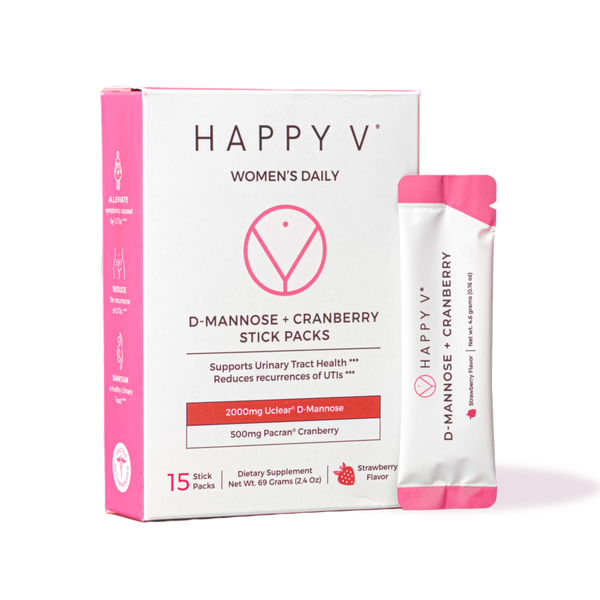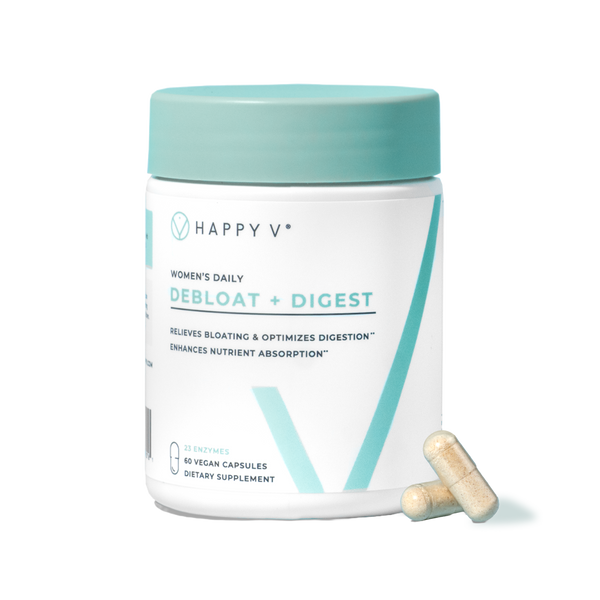- Fact Checked
- June 28, 2025
- 6 min read
Table of Contents
If you’ve ever felt like you're on a BV merry-go-round—especially when you’re sexually active with the same partner—you’re not imagining things. Recurring bacterial vaginosis is frustratingly common, and it often leaves people wondering if their relationship (or body) is to blame.
We’re here to tell you: it’s neither. And there’s science to explain why.
This post is for informational purposes only and does not constitute medical advice. See full disclaimer below.
Quick Answer — You’re Not Alone
Bacterial vaginosis (BV) is the most common vaginal infection among women of reproductive age1. It happens when there’s an overgrowth of certain vaginal bacteria—often including Gardnerella vaginalis—that throw off your natural balance of lactobacilli (the good bacteria living in your vagina that support a healthy vaginal pH).
While BV is not considered a sexually transmitted infection (STI) by the CDC and other public health officials, being sexually active—even with the same partner—can still play a role in the recurrence of bacterial vaginosis2.
Let’s Talk About What BV Is (And Isn’t)
BV is a vaginal infection caused by an imbalance in the vaginal microbiome3. When lactobacilli are depleted, your vaginal pH loses its acidity4. The slight acidity is what kills bad bacteria. Without it, these bad, infection-causing bacteria can not only thrive, but overtake the vaginal microbiome, leading to symptoms of bacterial vaginosis like:
- Unusual vaginal discharge (often thin and grayish)5
- A strong, fishy smell—especially after sex6
- Itching, swelling, and general irritation7
The symptoms of BV are confused with those of a yeast infection8, but they’re very different. Yeast infections are fungal. BV is bacterial9. This difference matters because both require different treatments to resolve them effectively. What these infections do have in common, though, is that neither one is caused by poor hygiene or being “unclean.”
Why BV Keeps Coming Back With the Same Partner
While the risk of recurring BV increases with more or new sexual partners10, there are several science-supported reasons for recurring BV infections, even with a consistent, monogamous partner11. Those include:
1. Vaginal pH Disruption From Semen
Your vaginal pH is slightly acidic. Semen is alkaline (aka the opposite of acidic)12. This means that semen can increase your vaginal pH13. This shift can promote the overgrowth of harmful vaginal bacteria, increasing the risk of BV recurrence.
2. Reinfection From an Untreated Partner
Men cannot get bacterial vaginosis, but studies suggest that a male partner can carry BV-associated bacteria14. That means even if you finish your course of antibiotics, you might be re-exposed to infection-causing bacteria through your sex partner15.
Reinfection isn’t just possible—it’s a documented concern in clinical trial data, whether you have male or female partners. Sexual activity doesn’t just involve penetrative sex, either. Bacteria can also be passed during oral sex, digital contact, or through unclean sex toys.
3. Unprotected Sex
If you don’t use condoms or other forms of barrier contraception, BV bacteria can be reintroduced16. Research indicates that consistent condom use may reduce the recurrence of bacterial vaginosis17.
4. Biofilms Make Treatment Tough
BV-causing bacteria often form sticky structures called biofilms that make them more resistant to antibiotic treatments like metronidazole or clindamycin18. This could explain why BV symptoms seem to go away with antibiotic treatment and then come right back when it’s over.
Is BV an STI?
No. It isn’t. But there is some nuance here19.
While BV is not officially categorized as a sexually transmitted infection (STI), many clinicians recognize that being sexually active—especially with new partners or frequent unprotected sex—can increase the risk of BV infections.
That said, BV can also occur in people who’ve never had sex20. It’s a common vaginal infection that’s rooted in microbiome balance, not sexual behavior alone. Still, patterns of recurring BV can often correlate with intimacy.
How to Support Your Vaginal Health
When it comes to vaginal health and reducing the risk of recurring bacterial vaginosis, here are some evidence-informed practices:
1. Finish Your Course of Antibiotics
If you’re prescribed antibiotics to treat your BV, finish the course exactly as prescribed. Do not stop taking your antibiotics just because symptoms have improved21. Ending treatment early may lead to lingering bacteria and increase your risk of bacterial resistance. Always follow your healthcare provider’s instructions.
2. Supplement With Probiotics
Probiotics that contain lactobacilli (especially strains like L. crispatus LA-14® and L. rhamnosus HN001™) can help restore balance during or after antibiotic treatment22 and support a healthy microbiome.
3. Use Condoms or Barrier Methods
Condoms can protect against semen-related pH shifts and may lower the chance of reinfection, especially in cases involving a male partner or a new partner.
4. Avoid Douching and Scented Products
Douching is one of the top risk factors for BV. It disrupts your vaginal flora and pH. Steer clear of deodorants, fragranced soaps, and scented wipes near your vulva. These contain chemicals that come with an increased risk of irritation or imbalance.
5. Switch to Cotton Underwear
BV-causing bacteria thrive in dark, moist environments. Cotton underwear is more breathable than synthetic materials, keeping the area cool and dry.
When to Talk to Your Healthcare Provider
Your gynecologist or other healthcare provider is your best ally in ending recurring BV. They can not only accurately diagnose your symptoms, but also help explore risk factors like IUD use, hormonal shifts, and other gynecologic considerations, especially for sexually active individuals or pregnant women.
Call your healthcare provider if:
- This is your first time experiencing symptoms
- You have been diagnosed with 3 or more BV infections in a year
- Your symptoms are not going away or are getting worse, despite home remedies or prescription treatments.
Your provider may recommend a change in contraception, partner treatment, or science-backed vaginal probiotics.
You Deserve to Feel Comfortable—Period.
Bacterial vaginosis is not your fault and it’s nothing to be ashamed of. Whether it’s a new partner or a long-term relationship, your vaginal microbiome may just need some extra love and support.
At Happy V, we’re committed to empowering you with clinically-informed education and thoughtful products. If you’re curious about probiotics or other home remedies that support vaginal health, we’ve got your back (and your V).
Keep the Conversation Going
- Visit our blog for more on BV treatment options and women’s health tips.
- Join our private Happy V Facebook group to hear from others who’ve been there.
- Explore supplements designed to support your vaginal health journey.
Disclaimer: This blog is for informational and educational purposes only and is not intended to diagnose, treat, cure, or prevent any disease. Statements about supplements have not been evaluated by the Food and Drug Administration. For more information about vaginal infections, visit the CDC or speak to a licensed healthcare provider.










